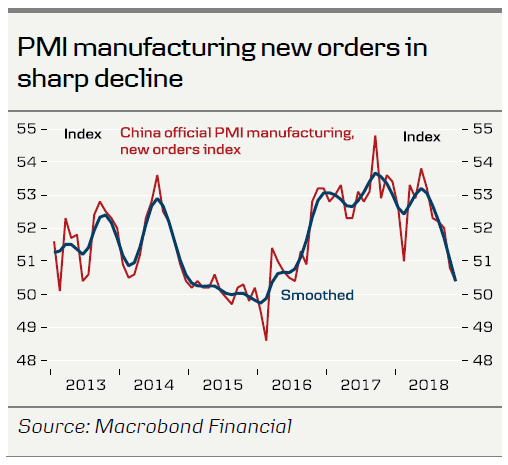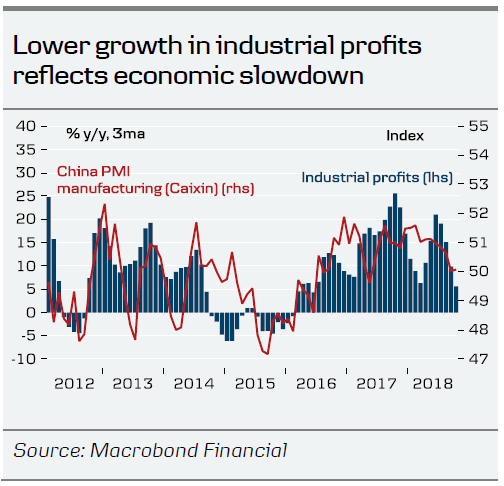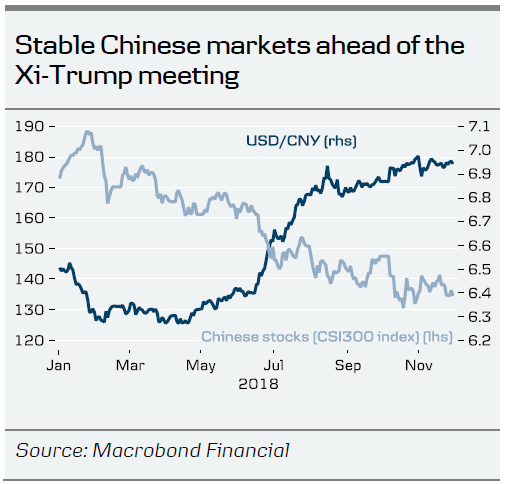- Trump sees ‘good possibility that a deal can be made’.
- Weaker profit growth and PMI underline Chinese slowdown.
- Taiwan’s pro-independence government suffered big defeat at ‘mid-term’ elections.
Trump sees ‘good possibility that a deal can be made’
It’s finally crunch time for Donald Trump and Xi Jinping as they face off at the dinner scheduled for Saturday evening after the G20 gathering. While signals from Trump have been mixed over the past week, the latest message before he left for Buenos Aires was one of cautious optimism. He said the two sides were ‘very close’ to a deal and added ‘I’m open to making a deal, but frankly, I like the deal we have now’ referring to the current situation with tariffs on China, see Bloomberg . Earlier this week, Trump’s economic adviser, Larry Kudlow, said at a press conference that Trump saw a ‘good possibility that a deal can be made’… and that he’s ‘open to it’ if certain conditions are met, see CNBC .
On Friday, the Financial Times reported that officials have begun to plan for follow-up negotiations in case Xi and Trump agree on a truce. In this case, a delegation of 30 officials led by China’s economic tsar Liu He could be going to Washington for 12-15 December.
Yesterday, it was reported that ultra-hawk on China, Peter Navarro, will also participate in the dinner meeting, contrary to rumours earlier this week.
Comment: We still see a 60% chance that Trump will opt for a ceasefire deal that includes a plan for further negotiations. Trump may condition abstaining to raise tariff rates from 10% to 25% on 1 January, on how big the concessions from China are at negotiations in mid-December. If Trump chooses further escalation over negotiations, it could backfire, as it would increasingly hurt the US markets and economy. For more details, see US-China trade – Five reasons why we still see 60% chance of ceasefire , 29 November 2018.
Weaker profit growth and PMI underline slowdown
The official version of PMI manufacturing for November dropped further to 50.0 from 50.2 in October. It just escaped falling below the psychologically important 50-level, which would have signalled contraction. The details showed another drop in the new orders index to a two-year low (see top chart). Data on industrial profits painted a similar picture as they showed a decline to 3.6% y/y in October from 4.1% in September (see bottom chart).
Comment: The slowdown is no big surprise and is in line with our expectations, see China Leading Indicators: It gets worse before it gets better, 21 November 2018. We look for stimulus to kick in more forcefully during the first half of 2019 and it might be increased further through tax cuts for households and companies, and possibly more reductions of the Reserve Requirement Ratio for banks. When a trade deal is finally struck, which we look for eventually, it should also lift uncertainty and underpin demand.
Taiwan’s independence-leaning government suffered big defeat
The independence-leaning Democratic Progressive Party (DPP) suffered big losses in Taiwan’s local elections on Saturday, which led to the resignation of their leader and Taiwanese President Tsai Ing-wen, see CNN and SCMP. DPP now only has the majority in six out of 22 cities and counties versus 13 before the elections. It points to a victory by the more Beijing-friendly Kuomintang (KMT) at the 2020 presidential election. Tsai Ing-wen grabbed the headlines when she called US President Donald Trump and congratulated him on winning the election in 2016. It was seen as a potential break with the One China Policy by the US, as the US has abstained from official diplomatic relations with Taiwan since 1979.
Comment: The result is a win for Beijing as it signals the Taiwanese population does not support Tsai Ing-wen’s more independence-leaning policy and flirtations with the US, which has angered China. The Taiwanese economy has taken a hit from a sharp decline in Chinese tourists going to Taiwan and military tensions have increased. It is also a defeat for the US in its attempts to challenge China in the Asian region. We are likely to see either the DPP turn more Beijing-friendly to gain ground ahead of the 2020 election or see a new government run by KMT, which wants closer ties with China.
Other China news:
Chinese markets have been fairly calm this week again with both stocks and USD/CNY moving sideways (see chart).
The main story from The Economist this week is on the US-China tech rivalry. The conclusion is “America cannot afford to ignore China’s semiconductor ambitions. It cannot simply tame them, either.”
On a similar note, a Chinese chipmaker has been caught up in the increasing US assault on China’s tech ambitions, see SCMP. Following a US export ban on the Chinese chipmaker Fujian Jinhua Integrated Circuit Co, the company has moved from being an important part of a plan to make China self-sufficient on key technology to a company in shatters. The company was supposed to become a competitive producer of memory chips used in smartphones, but the US Department of Commerce has banned exports of the manufacturing gear it needed to achieve that. It follows an accusation by the US Justice Department of stealing US technology.
More on tech rivalry: White House senators accuse Chinese tele equipment manufacturer ZTE of cheating on a US deal, which could risk new sanctions and possibly an export ban, see SCMP.
SCMP had a story on “how China’s economic reformers are using US trade war to push demands for opening up”. It highlights what has often been the case in China, that external pressure is helping the reform-friendly faction of the Communist Party to push through reforms and further opening up. The article says that “about a dozen intellectuals in government-backed think tanks have been calling for key reforms through lobbying Liu, the country’s vice-premier, and other policymakers ‘in oral or written forms’.”
The Wall Street Journal (WSJ) had a long interview with Trump on trade this week, which is worth a read if you have some extra time, see full transcript (paywall). For those interested in some background and insights on the trade war, I also recommend the WSJ’s inside storyreleased on Thursday. Among other things, it confirms that the trade hawk US Trade Representative is the one with most influence on Trump when it comes to trade.
















